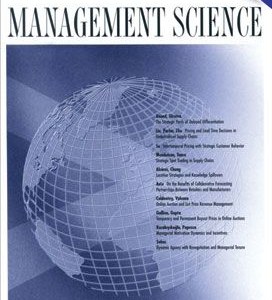
Eisert, T. and Eufinger, C. (2018). Interbank Networks and Backdoor Bailouts: Benefiting from other Banks’ Government Guarantees Management Science, 65(8):3673--3693.
-
Affiliated author
-
Publication year2019
-
JournalManagement Science
This paper explains why banks derive a benefit from being highly interconnected. We show that when banks are protected by government guarantees, they can significantly increase their expected returns by channeling funds through the interbank market before these funds are invested in real assets. If banks that are protected by implicit or explicit government guarantees act as intermediaries between other banks and real investments, there is the possibility that these intermediary banks will be rescued by their governments if the real assets fail. This additional hedge increases the likelihood that banks and their creditors are repaid relative to a direct investment in those same real assets. We show that this incentive to exploit the government guarantees of other banks leads to long intermediation chains and a degree of interconnectedness that is above the welfare-optimal level, which justifies regulatory intervention.